Damage
Damage describes any damage dealt or received by the Traveler and how outside sources, such as an equipped item or a debuff, may impact results.
Outgoing damage[edit | edit source]
Outgoing damage refers to damage dealt by the Traveler. Damage dealt is rounded to the nearest whole number.
Damage bonuses[edit | edit source]
The Traveler's outgoing damage can be calculated with the following formula:
Total Damage = Base Damage × Motion Value × (1 + ∑(Regular Damage)) × (1 + ∑(Critical Damage)) × (1 + ∑(Weakspot Damage)) × (1 + Unique1) × (1 + Unique2) ...
Damage buckets[edit | edit source]
In Remnant 2, all damage multipliers are separated into categories; for convenience, these categories will be referred to as Damage Buckets. Damage bonuses within these "buckets" stack with themselves additively, and with each other multiplicatively. There are three standard buckets: Regular, Critical, and Weakspot; a handful of other bonuses exist as separate Unique multipliers. To get a better understanding of these categories, refer to this example build:
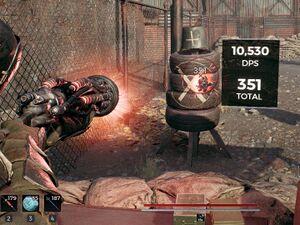
Regular[edit | edit source]
The vast majority of damage increases fall into the Regular Bucket.
The Stone of Balance provides a 7% increase to All Damage and the Ranged Damage Relic Fragment provides a 10% boost to Ranged Damage. Both of these items confer a bonus to Regular damage, thus they are additive.
7% + 10% = 17%
Weakspot[edit | edit source]
Some items increase the damage dealt when the Traveler strikes an enemy's Weakspot. These damage increases fall into the Weakspot Bucket.
The Repulsor has a built-in Weakspot Damage Bonus of 100%. At max stacks, Zania's Malice provides an additional +20%, and the Weakspot Damage Relic Fragment provides an additional +15%.
100% + 20% + 15% = 135%
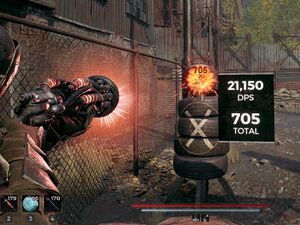
Critical[edit | edit source]
Some items increase the damage dealt by Critical Hits. These damage increases fall into the Critical Bucket.
Critical hits do +50% damage by default. Probability Cord provides an additional +20%, and the Ranged Critical Damage Relic Fragment provides an additional +15%.
50% + 20% + 15% = 85%
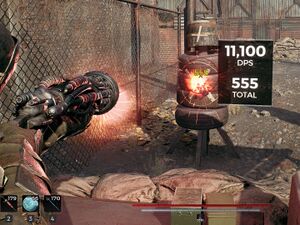
Unique[edit | edit source]
Although there are only three damage buckets, there is a handful of items that provide multiplicative damage bonuses. These bonuses are unique; they are always multiplicative, even with each other. These items are:
 Banish (x1.5)
Banish (x1.5) Brightstone (x1.1)
Brightstone (x1.1) Onyx Pendulum (x1.2)
Onyx Pendulum (x1.2)
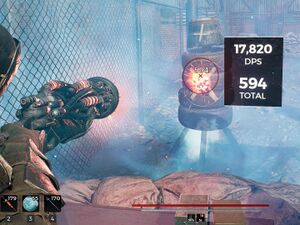
Addendum[edit | edit source]
Currently, there are three multiplicative damage bonuses that do not fall into any of the above categories. They are additive with one another and affect only Status Effect damage.
 Creeping Mist (x1.25)
Creeping Mist (x1.25) Stormbringer (x1.1)
Stormbringer (x1.1) Vile (x1.15)
Vile (x1.15)
Calculation[edit | edit source]
With this knowledge, we can now plug the numbers into the Total Damage equation:
300 × (1.17) × (2.35) × (1.85) × (1.5) × (1.2) × (1.1) = 3,021.43
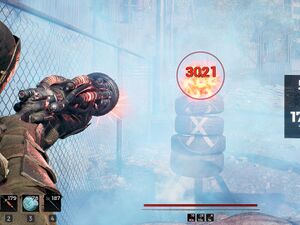
Motion values[edit | edit source]
When attacking with a melee weapon, its damage is multiplied by an internal value known as Motion Value; understanding these values are key to optimizing melee damage output. This value differs between Standard, Charged, Neutral Evade, Charged Neutral Evade, and Sprint attacks. This value remains consistent regardless of upgrade level, though it can vary between attacks within a single string. Some weapons[1] have a value for their Projectile.
Motion Values are not considered a Damage Bucket; they are always multiplicative and cannot be increased by any means.
Calculation[edit | edit source]
This is the motion value chart of the Scrap Hammer.
| Attack String | Value | |
|---|---|---|
| Standard | 1 | 100% |
| 2 | 100% | |
| Charged | 1 | 230% |
| 2 | 230% | |
| Sprint | 115% | |
| Standard (Neutral Evade) | 100% | |
| Charged (Neutral Evade) | 280% | |
At base level, the Scrap Hammer deals 83 base damage.
Using this formula, we can determine that a Charged Neutral Evade attack will deal 232.4 damage.
83 x 2.8 = 232.4
-
At base level, Scrap Hammer's Charged Neutral Evade attack deals 232.4 damage.
At max level, the Scrap Hammer deals 249 base damage. A Charged Neutral Evade attack will deal 697.2 damage.
249 x 2.8 = 697.2
-
At max level, Scrap Hammer's Charged Neutral Evade attack deals 697.2 damage.
Upgrades[edit | edit source]
Rigs is capable of upgrading weapons, increasing the damage of the weapon and its attached Weapon Mod. Other statistics, such as fire rate and accuracy, are not affected by upgrade level.
Calculation[edit | edit source]
At max level, a weapon will always deal 3x its original base damage. Fully upgrading a weapon will always cost ![]() 1.
1.
There are two upgrade paths: one for standard weapons, and one for special weapons.
Standard weapons[edit | edit source]
All standard weapons can be upgraded to +20. With each level, the weapon's base damage will increase by 10% of its original value.
Standard weapons require ![]() Iron and
Iron and ![]() Scrap to upgrade.
Scrap to upgrade.
This is the upgrade table for the Coach Gun, which has a base damage of 115.
Special weapons[edit | edit source]
All special weapons can be upgraded to +10. With each level, the weapon's base damage will increase by 20% of its original value.
Special weapons require ![]() Iron,
Iron, ![]() Lumenite Crystals, and
Lumenite Crystals, and ![]() Scrap to upgrade.
Scrap to upgrade.
This is the upgrade table for Sporebloom, which has a base damage of 200.
Incoming damage[edit | edit source]
"Incoming Damage" refers to any damage dealt to the Traveler or their allies.
Difficulty multipliers[edit | edit source]
The amount of damage enemies deal scales with Difficulty. An additional damage modifier is applied depending on enemy type.[2] When this multiplier is factored in, enemy damage is as follows:
| Enemy Type | Difficulty | |||
|---|---|---|---|---|
| Survivor | Veteran | Nightmare | Apocalypse | |
| Standard | 100% | 125% | 215% | 275% |
| Elite | 100% | 137.5% | 172% | 247.5% |
| Brute | 100% | 137.5% | 182.75% | 247.5% |
| Aberration | 100% | 137.5% | 172% | 247.5% |
| Boss | 100% | 137.5% | 193.5% | 275% |
| World Boss | 100% | 137.5% | 193.5% | 261.25% |
Damage reduction[edit | edit source]
Total Damage Reduction decreases all incoming damage by up to 80%. Any additional damage reduction beyond this point (with one notable exception) will be wasted.
There are three primary methods of reducing damage: Armor DR, Flat DR, amd Enemy Debuffs.
Armor DR is the damage reduction provided by your equipped armor.
Flat DR is the damage reduction provided by other sources. Examples include:
- Lithic Signet
- Barkskin Trait
- Stacks of BULWARK
Enemy Debuffs do not directly reduce damage taken; rather, they reduce the damage enemies deal. This can be used to effectively bypass the Damage Reduction cap of 80%. Examples include:
For a more comprehensive overview of Damage Reduction, and formulas on how to calculate these values for yourself, refer to this article.
Armor damage reduction[edit | edit source]
The sum total of all equipped armor pieces provide Armor DR, which directly reduce damage taken.
All armors have built-in resistances to contextual damage types such as BLEED, FIRE, SHOCK, CORROSIVE, and BLIGHT.
An armor's protection rating is directly proportional to its weight. LIGHT armors have a greater armor/weight ratio, but lower total armor; HEAVY armors have a lower armor/weight ratio but higher total armor.
This is an example statistics table for armors of each type.
| Armor | Weight | Armor Value | Armor/Weight Ratio | Resistances |
|---|---|---|---|---|
| Bandit | 21.6 (LIGHT) |
54.4 | 2.519 | |
| Academic | 41.6 (MEDIUM) |
98.8 | 2.375 | |
| Knotted | 55.2 (HEAVY) |
124.3 | 2.252 | |
| Leto Mark II | 90 (ULTRA) |
176.8 | 1.964 |
Flat DR[edit | edit source]
Some items (such as the Lithic Signet and the Barkskin Trait) provide damage reduction; the sum total of these increases is known as Flat DR.
Enemy debuffs[edit | edit source]
Certain abilities can decrease the damage enemies deal. This reduction is applied before any other calculations, allowing the Traveler to bypass the 80% Damage Reduction cap.

